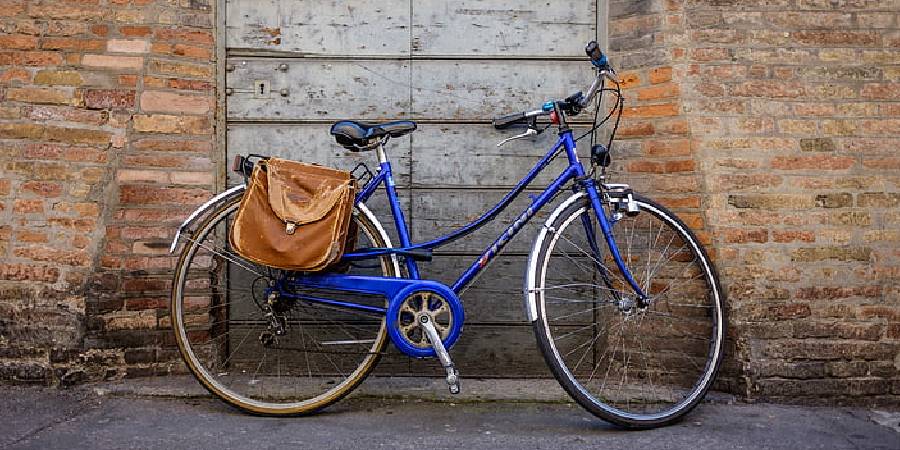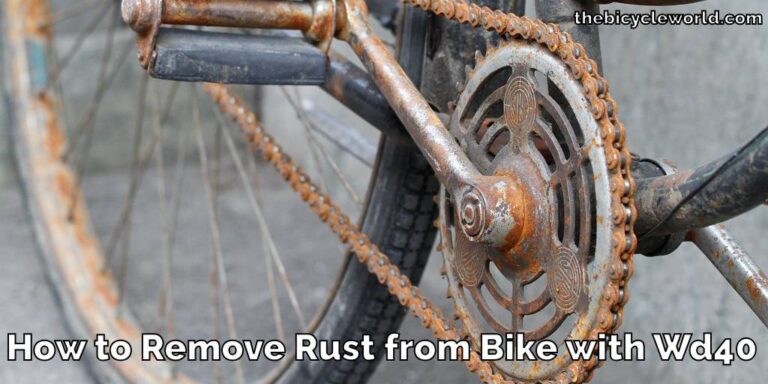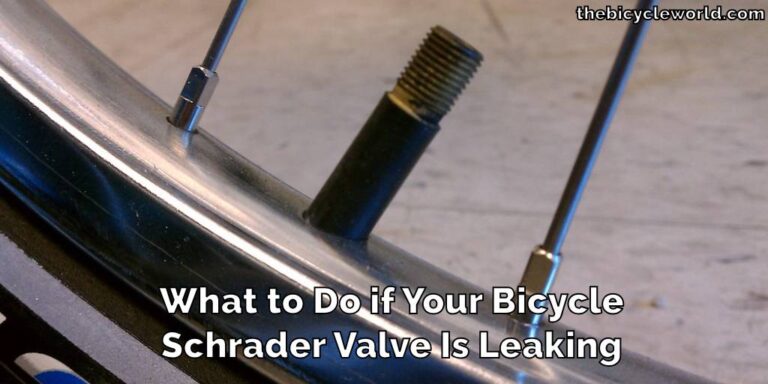How to Transport a Bike without A Rack
Introduction
Bicycling is not just a leisure activity or a means of exercise for many, it’s a lifestyle. However, a common challenge for cyclists is transporting their bikes, especially when a bike rack isn’t available.

This situation can arise during travel, moving to a new place, or simply when taking your bike to a repair shop. Understanding how to transport a bike without a rack is crucial for maintaining the bike’s integrity and ensuring safe transportation.
This guide aims to provide comprehensive insights into various methods and precautions for transporting a bike without a rack, making your cycling experience hassle-free.
Why You Need to Transport a Bike without a Rack
There are multiple scenarios where one might need to transport a bike without a rack. Perhaps you’ve just purchased a new bike and need to bring it home, or maybe you’re heading to a biking trail that’s too far to cycle to.

In other instances, cyclists face unexpected situations like a broken bike rack or a borrowed vehicle without one. In these situations, knowing alternative methods becomes essential.
Moreover, not all vehicles are equipped with a bike rack, and purchasing one might not be feasible for occasional use. Therefore, knowing rackless bike transportation methods not only saves time and money but also expands your options for bike adventures.
Tools We Need to Transport a Bike without A Rack
Transporting a bike without a rack requires some basic tools to ensure your bike stays safe and doesn’t damage your vehicle. Here’s what you’ll need:
- Blankets or Foam Padding: Soft blankets or specialized foam padding are essential to protect both your bike and car from scratches and dents. Wrap the bike frame, especially around the handlebars and pedals, to prevent them from hitting and scratching the car’s interior.
- Bungee Cords or Straps: These are crucial for securing the bike in place. Whether you’re placing the bike inside your car, on a truck bed, or tied to the roof, bungee cords or sturdy straps will ensure the bike doesn’t move during the journey. Make sure they are tightly fastened but not so tight that they bend or damage any part of the bike.
- A Sturdy Rope: In addition to bungee cords, having a sturdy rope can be helpful, especially if you need to tie the bike to a roof without a rack. The rope should be strong enough to hold the bike’s weight and not fray or snap under pressure.
- A Large, Durable Cloth or Tarp: This is useful for covering the bike, especially if you’re transporting it in an open area like a truck bed. It protects the bike from dust, rain, or any debris that might hit it during transit.
- Padding for the Bike Frame and Pedals: Extra padding for the frame and pedals can be made from bubble wrap, foam, or even old clothes. This additional layer ensures that the more delicate parts of the bike, like the gears and chain, are safeguarded against bumps and vibrations during the trip.
By gathering these items, you can safely transport your bike without a rack, ensuring it arrives in the same condition it was left in.
How to Transport a Bike without A Rack
Transporting your bike without a rack is doable and can be straightforward with the correct methods. Here are some practical ways to transport your bike, suitable for various types of vehicles and bike sizes:
Inside a Car
The most straightforward method is to put the bike inside your car. This works well for hatchbacks, SUVs, or vans where you can fold down the rear seats to create space. For sedans, the process might require removing the front wheel of the bike to make it fit.

It’s important to ensure that the bike’s chain side is facing up to avoid any oil or grease from staining your car’s interior. Use padding under and around the bike to prevent any movement that could lead to scratches or dents.
Using a Trunk
If your car has a sizeable trunk, you can fit your bike in there by taking off both wheels. Wrap the bike frame and wheels in blankets or foam padding to avoid scratches.

This method may require a bit of puzzle-solving to fit everything snugly, but it’s a great way to keep your bike safe and out of sight during transportation.
On the Roof
For those without a rack but with roof rails on their vehicle, securing the bike to the roof is a viable option.
First, place a thick blanket or a piece of foam under the bike to protect your car’s paint. Then, use bungee cords or durable straps to tie the bike firmly to the rails. It’s crucial to ensure the bike is stable and won’t shift during the drive, as this could be dangerous.

In a Truck Bed
If you have a pickup truck, transporting a bike becomes simpler. Just lay the bike down in the truck bed, ideally with padding underneath to protect it from bumps and vibrations.
Secure the bike to the truck bed hooks using ropes or straps. This method is especially useful for quick trips or if you’re transporting multiple bikes.
Backseat Method
For those with smaller cars, placing the bike in the backseat is a practical solution.
Turn the bike upside down, lay a blanket on the seat first to protect your car’s interior, and then carefully place the bike on top. Pay special attention to the pedals and handlebars as they can potentially damage the upholstery or the car’s interior if not properly padded.
Each of these methods requires a bit of preparation and care to ensure your bike is transported safely without damaging your vehicle.
Remember to always secure the bike firmly, regardless of the method chosen, to prevent it from moving during the drive. With these techniques, you can confidently transport your bike to your destination, ready for your next cycling adventure.
Precaution While Transporting a Bike without A Rack
Transporting a bike without a rack requires careful attention to ensure both your bike and vehicle remain safe during the journey. Here are some key precautions to keep in mind:
- Firmly Secure the Bike: It’s crucial to tightly secure the bike to prevent it from moving during transport. This can be done using straps, bungee cords, or ropes. Whether you’re placing the bike inside the car, on the roof, or in a truck bed, make sure it’s fastened securely. Movement during transit can not only damage the bike but also pose a risk to safe driving.
- Use Adequate Padding: To prevent scratches or dents on both your bike and vehicle, use enough padding. This could include blankets, foam, or specially designed bike pads. Wrap the frame, pedals, and any protruding parts of the bike to avoid damage to your vehicle’s interior or exterior.
- Ensure Clear Visibility: While securing the bike, make sure it does not obstruct your view through the rearview or side mirrors. Clear visibility is essential for safe driving. Adjust the placement of the bike as needed to maintain a good view of the road and your surroundings.
- Mark Protruding Parts: If any part of the bike sticks out beyond the body of the vehicle, it’s important to mark these extensions. Use a red flag, cloth, or any bright material to tie to the protruding part. This serves as a warning to other drivers and helps prevent accidents.
- Check Local Laws and Regulations: Different places may have specific rules about transporting large items like bikes. Make sure to check and follow these regulations to avoid any legal issues.
- Regularly Check the Bike During Stops: On longer trips, it’s wise to regularly check the bike’s security during stops. Ensure that the fastenings are still tight and the bike hasn’t shifted in a way that could cause problems.
By following these precautions, you can safely transport your bike without a rack, ensuring that both your bike and vehicle stay in top condition throughout your journey.
FAQ’s
How Do You Secure a Bike Without a Rack?
To secure your bike without a rack, use bungee cords, straps, or ropes. These should be tightly fastened around the bike’s frame to the vehicle to prevent any movement.
Additionally, it’s important to add padding around the bike, especially at points where it could come into contact with the vehicle. This padding can be in the form of foam, bubble wrap, or even thick blankets, to protect both the bike and your vehicle from scratches or dents.
How Do You Secure a Bike When Traveling?
When you’re traveling with a bike, make sure it’s securely fastened either inside your vehicle or tied down on the roof if you don’t have a rack. For inside-the-car storage, ensure the bike doesn’t shift and is well-padded.
If it’s on the roof, use strong ropes or straps to tie it down to the roof rails. Additionally, using a lock to secure the bike to the vehicle during stops can provide extra security and peace of mind.
What is the Easiest Way to Transport Bikes With a Car?
The easiest way to transport a bike with a car largely depends on the type and size of your vehicle. For larger vehicles like SUVs or vans, you can easily place the bike inside, often without needing to remove the wheels.
In smaller cars, the backseat method, where you may need to remove the front wheel and turn the bike upside down, is usually more practical. Remember to use padding to protect your car’s interior.
How Do I Lock My Bike to My Car?
If you need to leave your bike unattended while it’s attached to your car, it’s wise to use a high-quality bike lock.
Lock the bike either to a secure part of the car’s interior, like seat frames, or, if outside, to a fixed part of the car like towing hooks or eyelets. This will help prevent theft or tampering.
Is It Necessary to Lock Your Bike?
Yes, locking your bike is always a good practice, especially in public areas or if you plan to leave it unattended for any length of time. Even if the bike is inside the car or secured to it, a lock adds an extra layer of security. It’s better to be safe and prevent potential theft.
Conclusion
Transporting a bike without a rack need not be a daunting task. With the right tools and techniques, you can safely and effectively transport your bike in various types of vehicles.
Whether it’s a short trip to a local trail or a long journey, these methods ensure your bike arrives in perfect condition, ready for your next adventure. This article has explored how to transport a bike without a rack.
Remember, the key is to protect both the bike and the vehicle from damage and to secure the bike firmly to avoid any mishaps. Happy cycling and safe travels with your two-wheeled companion!






